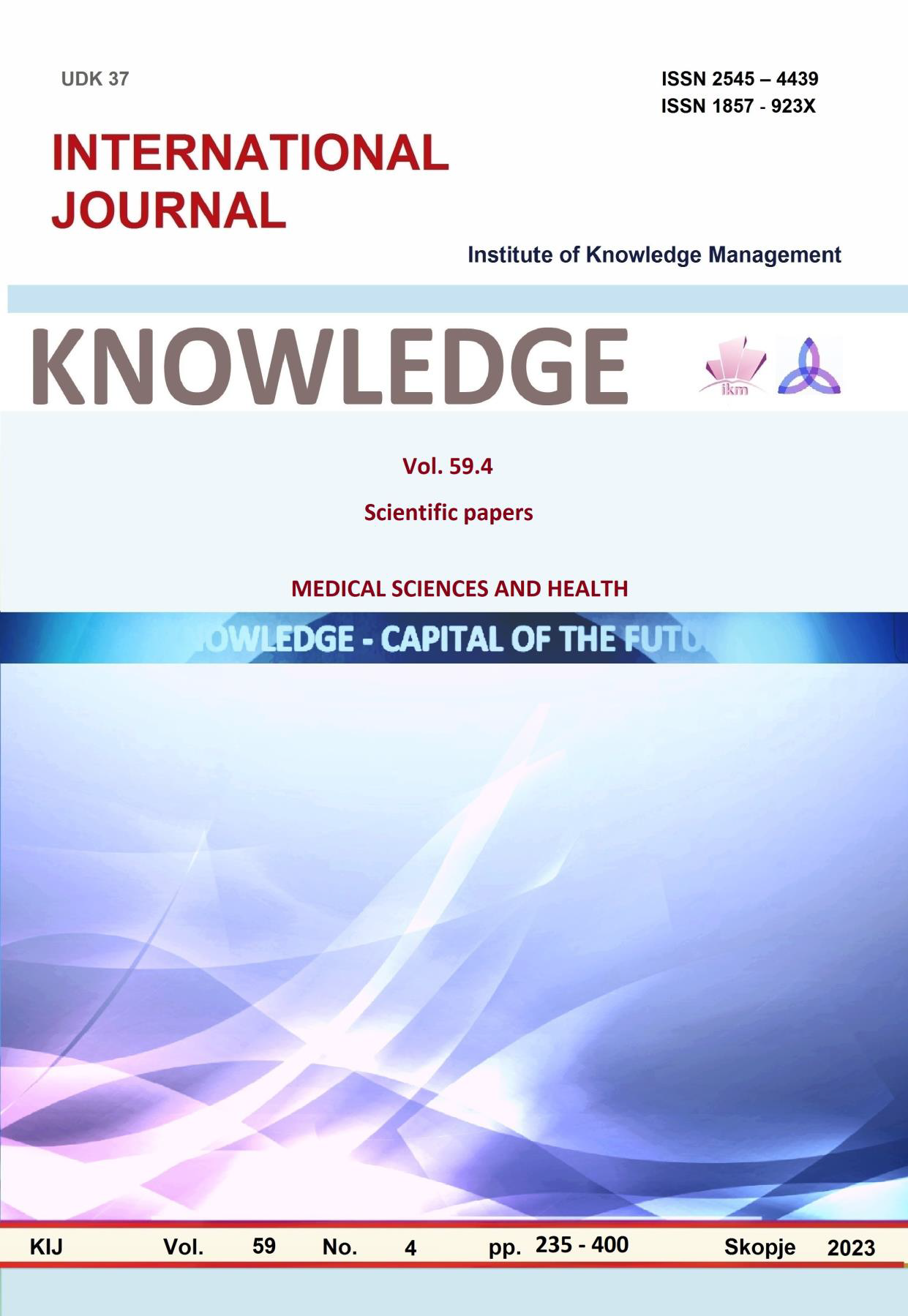ROLE OF SUPPLEMENTARY TREATMENT IN THE DEVELOPMENT OF DIABETIC RETINOPATHY
Keywords:
antioxidants, mechanisms, survey, management and preventionAbstract
The topic dealt with in this thesis determines the function of supplements when dealing with diabetic retinopathy. Uncontrolled diabetic retinopathy, which is a significant consequence of diabetes mellitus, can result in vision loss or blindness. The number of patients with diabetes mellitus is constantly increasing. In direct proportion to that, the number of patients with complications from it, among which is diabetic retinopathy, is also increasing. Not all patients with diabetic retinopathy will have the same symptoms, and the manifestation of the condition can vary. This makes the diagnosis of diabetic retinopathy a challenge for ophthalmology. Some individuals remain asymptomatic until the retinopathy progresses to more advanced stages. Risk factors include duration of diabetes, uncontrolled hyperglycemia, hypertension, smoking cigarettes, dyslipidemia, genetic factors, pregnancy.
Today in Macedonia, the treatment of diabetic retinopathy includes standard complementary treatments, such as laser photocoagulation and intravitreal injections. These therapies manifest good results and prevent the progression of the condition. However, interest in the use of complementary treatment is increasing.The aim is to reduce the potential complications and risks, both from damage to the retinal blood vessels caused by diabetes, as well as from therapies in patients with already diagnosed diabetic retinopathy. As for any pathological condition, so for diabetic retinopathy, prevention is superior to treatment. Antioxidants, vitamins, omega-3 fatty acids, neuroprotective agents, aldose reductase inhibitors are part of the additional therapy that patients use.
The etiology of diabetic retinopathy, the pathophysiology of the condition, risk factors and conventional therapies, such as laser photocoagulation and vitrectomy, need to be addressed in order to understand the possible mechanisms of action of supplement therapy in the development of diabetic retinopathy, their efficiency and safety. Further research on interactions between conventional therapies and complementary treatment and their potential synergistic effects would be of great importance.
A survey was made to understand and summarize the effects that supplements have on patients with diabetic retinopathy. The group of patients who were surveyed had the opportunity to give their viewpoint on what improvements they notice after using the supplement therapy. Improvements that patients have noticed are: better visual clarity, reduced sensitivity to brightness and enhanced night vision. The results suggest that these treatments may be useful in the management and prevention of diabetic retinopathy. But in order to achieve any positive effects and to maximize them, good regulation of the hyperglycemic condition is required.
References
Banday, M. Z., Sameer, A. S., & Nissar, S. (2020). Pathophysiology of diabetes: An overview. Avicenna journal of medicine, 10(4), 174–188.
Behl, T., & Kotwani, A. (2017). Omega-3 fatty acids in prevention of diabetic retinopathy. The Journal of pharmacy and pharmacology, 69(8), 946–954.
Gazepov, S. (2019). Ophtalmological and optical instruments - script (1st ed.). University "Goce Delchev"-Stip.
Gazepov, S., & Sheribane, E. (2021). Diabetic retinopathy. Knowledge - International Journal, Scientific Papers, (47 (4)), 745-749.
Grieb, P., Jünemann, A., Rekas, M., & Rejdak, R. (2016). Citicoline: A Food Beneficial for Patients Suffering from or Threated with Glaucoma. Frontiers in aging neuroscience, 8, 73.
Ismaili, I., Gjoshevska-Dashtevska, E., Mehmeti, G., Gazepov, S., Rustemi, N., & Nivicka-Kaeva, J. (2018). PREVENTION OF VISUAL LOSS IN DIABETIC RETINOPATHY. KNOWLEDGE – International Journal , 22(5), 1321–1325.
Kowluru, R. A., Zhong, Q., Santos, J. M., Thandampallayam, M., Putt, D., & Gierhart, D. L. (2014). Beneficial effects of the nutritional supplements on the development of diabetic retinopathy. Nutrition &
metabolism, 11(1), 8.
Mayer-Davis, E. J., Bell, R. A., Reboussin, B. A., Rushing, J., Marshall, J. A., & Hamman, R. F. (1998). Antioxidant nutrient intake and diabetic retinopathy: the San Luis Valley Diabetes Study. Ophthalmology, 105(12), 2264–2270.
Miao, X., Sun, W., Miao, L., Fu, Y., Wang, Y., Su, G., & Liu, Q. (2013). Zinc and diabetic retinopathy. Journal of diabetes research, 2013, 425854.
Salmon, J. F., & Kanski, J. J. (2020). In Kanski’s clinical ophthalmology a systematic approach (pp. 496–510). essay, Elsevier.
Silva, K. C., Rosales, M. A., Biswas, S. K., Lopes de Faria, J. B., & Lopes de Faria, J. M. (2009). Diabetic retinal neurodegeneration is associated with mitochondrial oxidative stress and is improved by an angiotensin receptor blocker in a model combining hypertension and diabetes. Diabetes, 58(6), 1382–1390.
Wu, L., Fernandez-Loaiza, P., Sauma, J., Hernandez-Bogantes, E., & Masis, M. (2013). Classification of diabetic retinopathy and diabetic macular edema. World journal of diabetes, 4(6), 290–294.
Zachariah, S., Wykes, W., & Yorston, D. (2015). Grading diabetic retinopathy (DR) using the Scottish grading protocol. Community eye health, 28(92), 72–73.





